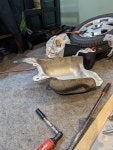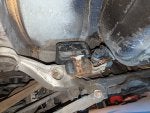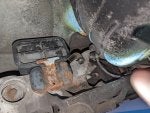I started getting a P2400 code after start-up.
This is an open circuit on the leak detection pump. I assumed that I had a bad pump, so I ordered a new pump.
This was a PITA to replace but I got it done today.
After replacing the pump, I started it and checked for codes, no codes.
We wrapped everything up and I pulled it out of the garage. When I went to leave the check engine light came on. I have the P2400 again.
Any ideas? The plug looked good and I did not see any corrosion.
I don't know where to go from here.
![]()
![]()
![]()
![]()
![]()
![]()
![]()
![]()
![]()
This is an open circuit on the leak detection pump. I assumed that I had a bad pump, so I ordered a new pump.
This was a PITA to replace but I got it done today.
After replacing the pump, I started it and checked for codes, no codes.
We wrapped everything up and I pulled it out of the garage. When I went to leave the check engine light came on. I have the P2400 again.
Any ideas? The plug looked good and I did not see any corrosion.
I don't know where to go from here.


















